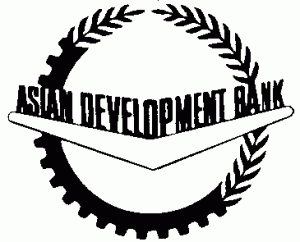Asia cannot bypass manufacturing on path to prosperity: ADB
Wednesday, August 21st, 2013 2:11:40 by Tahir Khan
Industrialization must be an essential part of the growth formula if Asian countries want to prosper and avoid the middle income trap, says a new Asian Development Bank (ADB) report.
In a special chapter of Key Indicators for Asia and the Pacific 2013, its flagship annual statistical publication, ADB emphasizes that manufacturing is essential to a high productivity service sector, technological innovation, and modernizing agriculture.
“Historically, no economy has reached high income status without reaching at least 18% share of manufacturing in output and employment for a sustained period,” said Changyong Rhee, ADB’s Chief Economist.
The report notes that one group of economies—Hong Kong, China; Japan; the Republic of Korea; Singapore; and Taipei,China—rapidly industrialized to become high income countries, while another group of economies, including the People’s Republic of China (PRC), Malaysia, and Thailand, are transforming more slowly.
Other developing Asian nations, such as Bangladesh, India, Pakistan or the Philippines, are changing even more slowly, have created few manufacturing jobs, and are shifting from agriculture into services.
“Right now, as services boom in the region, it’s tempting to shun industrialization, but it will be a serious mistake if a country wants to be prosperous,” Mr. Rhee added.
Industry does not lead the way in Asia, the report noted. Services are the largest share of developing Asia’s output and agriculture remains the largest employer, providing an income for 700 million people.
Regional diversity means Asia’s economies require different policy priorities to promote transformation. Modernizing the agricultural sector is a key task in developing Asia, in particular for low income countries.
For middle income economies heavily dependent on labor-intensive sectors or currently bypassing industrialization, the focus should be on upgrading their industrial base. For these nations, good quality education is essential for industrial diversification and reducing the path-dependency nature of structural transformation.
For small island economies, industrialization may not be cost effective, and the future lies in becoming competitive in certain service sector niche markets.
Key Indicators for Asia and the Pacific 2013 also charts regional progress in achieving the Millennium Development Goals (MDGs). It notes that two years before the MDG deadline in 2015, most of the region has made significant progress in reducing poverty, improving access to universal primary education, and promoting gender equity and women’s empowerment.
The special supplement, A Framework of Inclusive Growth Indicators, finds that progress toward more inclusive growth has been positive in the 1990s and 2000s on most indicators for the majority of developing economies in Asia.
Tags: ADB’s Chief Economist, Asian Development Bank, Changyong Rhee, Framework of Inclusive Growth Indicators, Millennium Development GoalsShort URL: https://www.newspakistan.pk/?p=41297

















